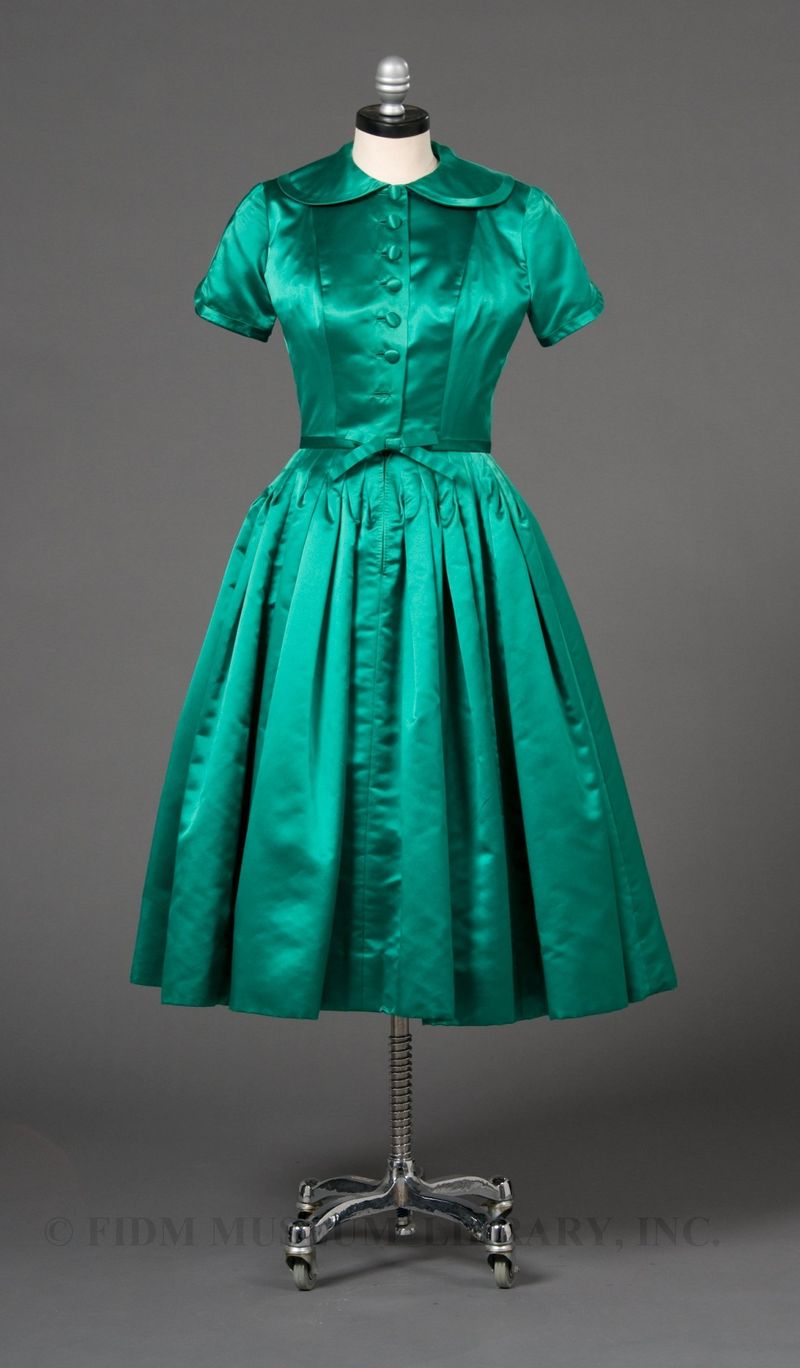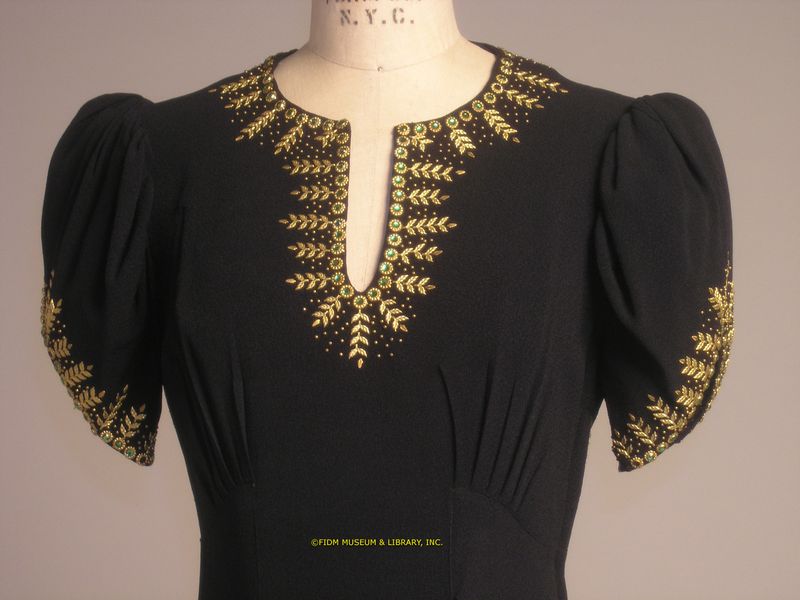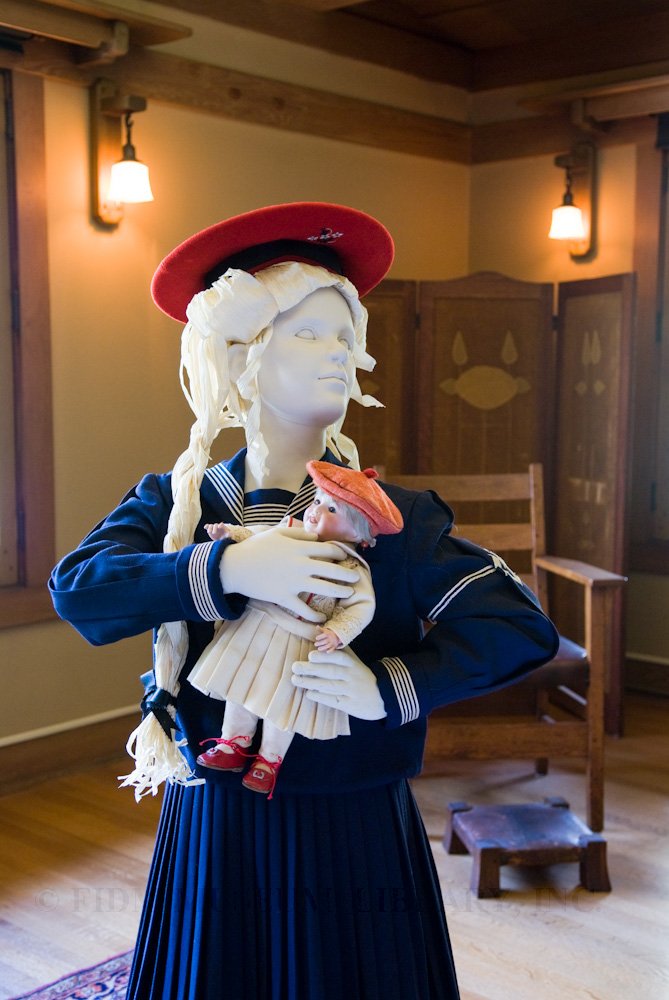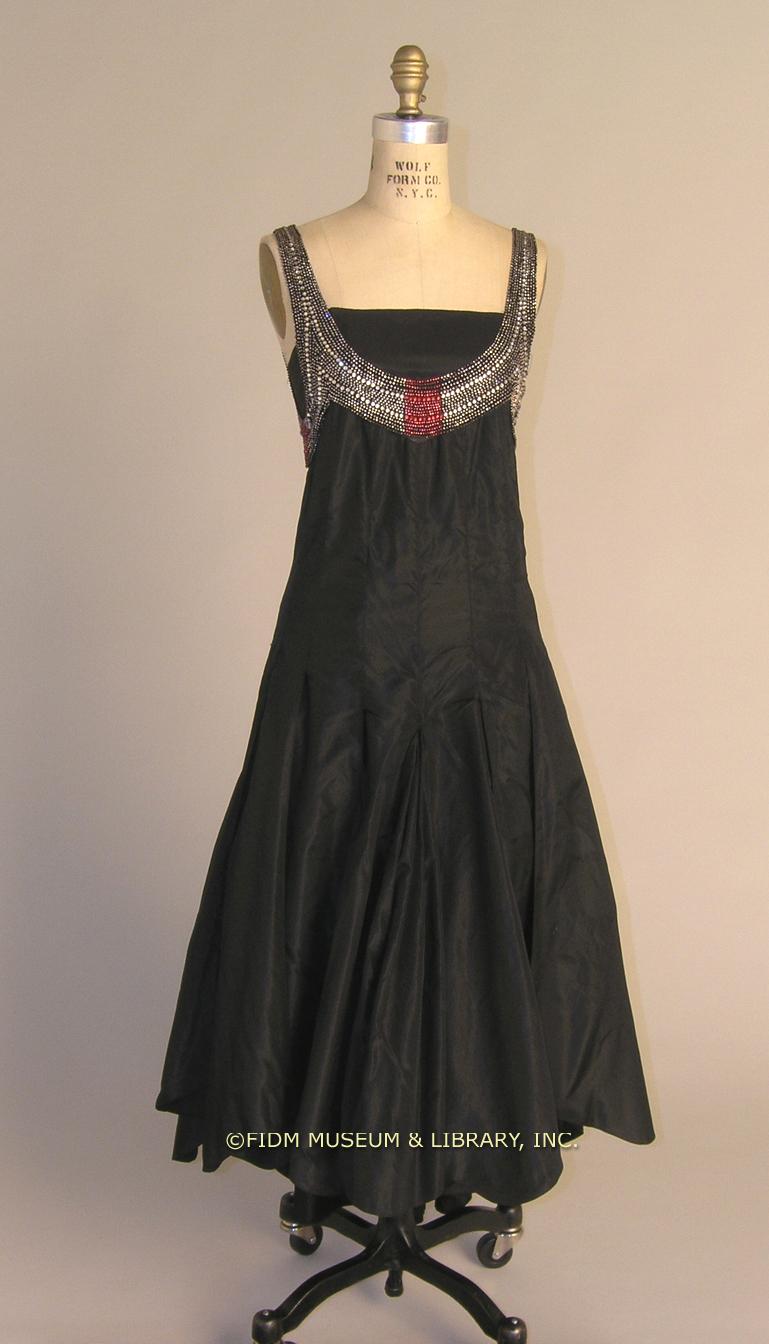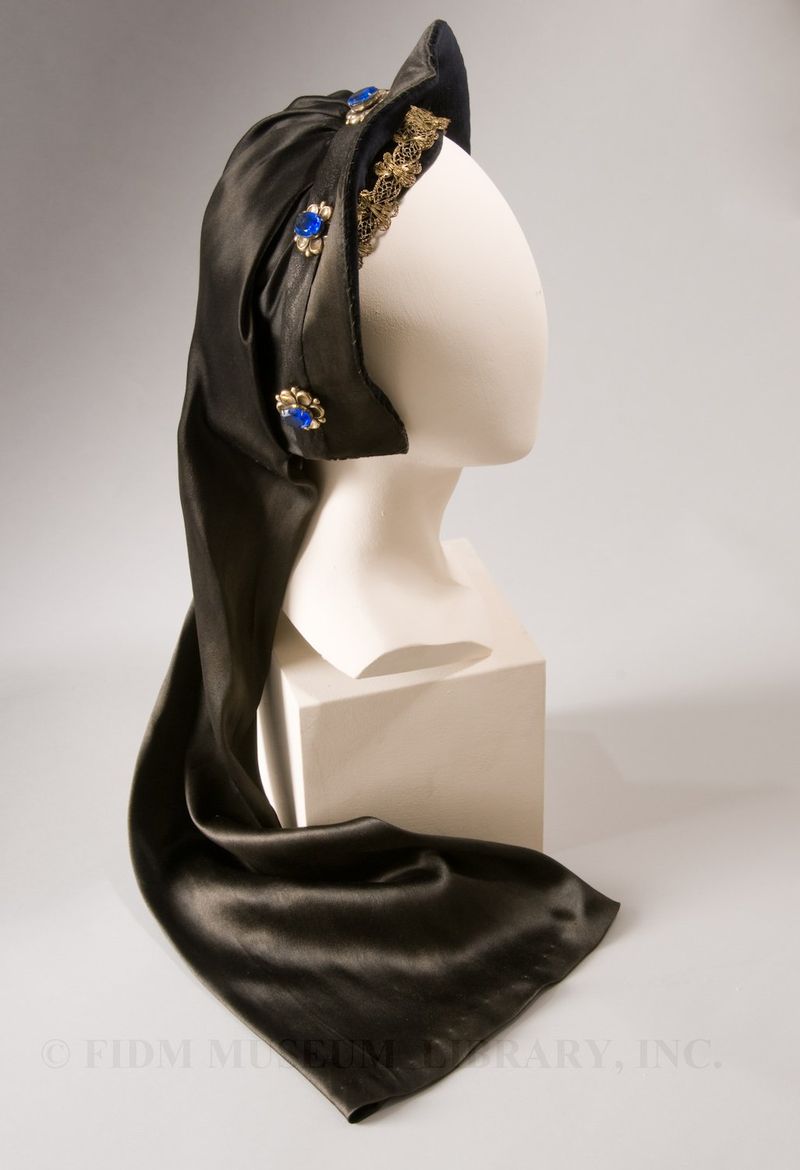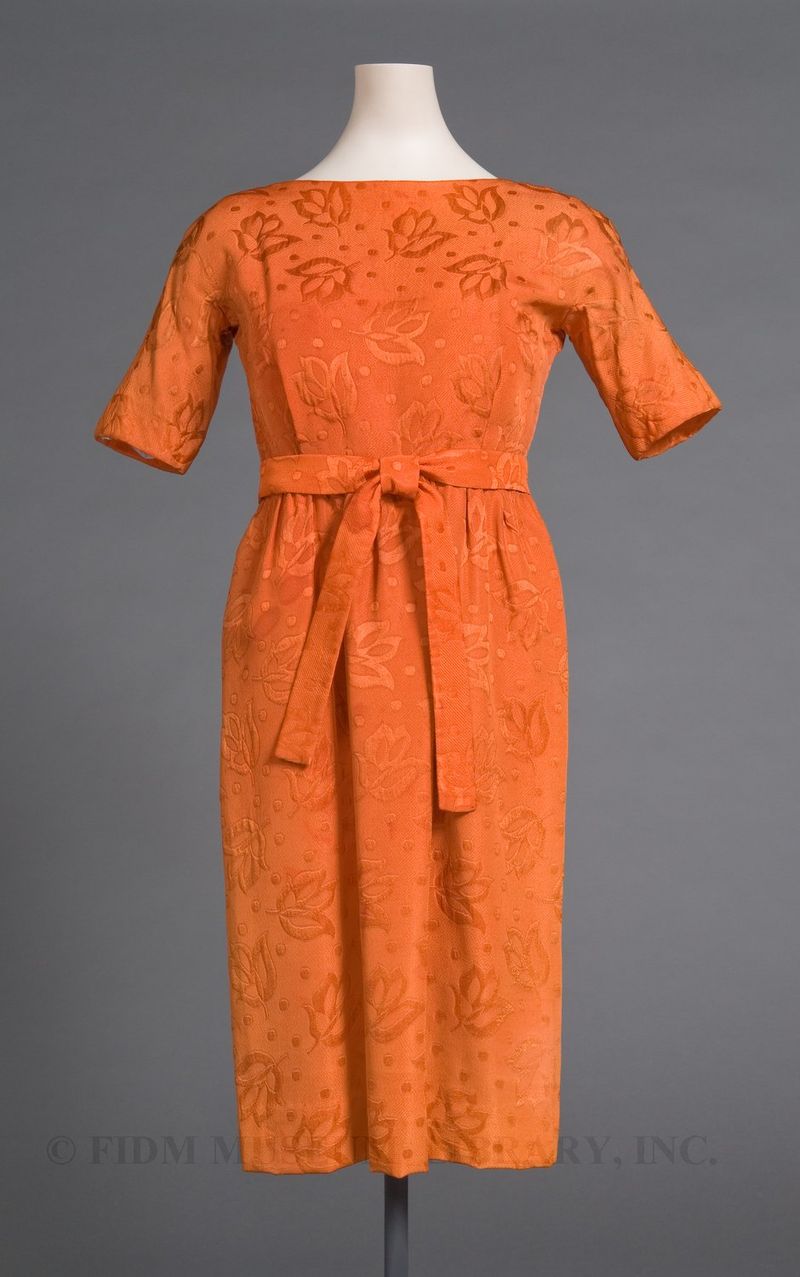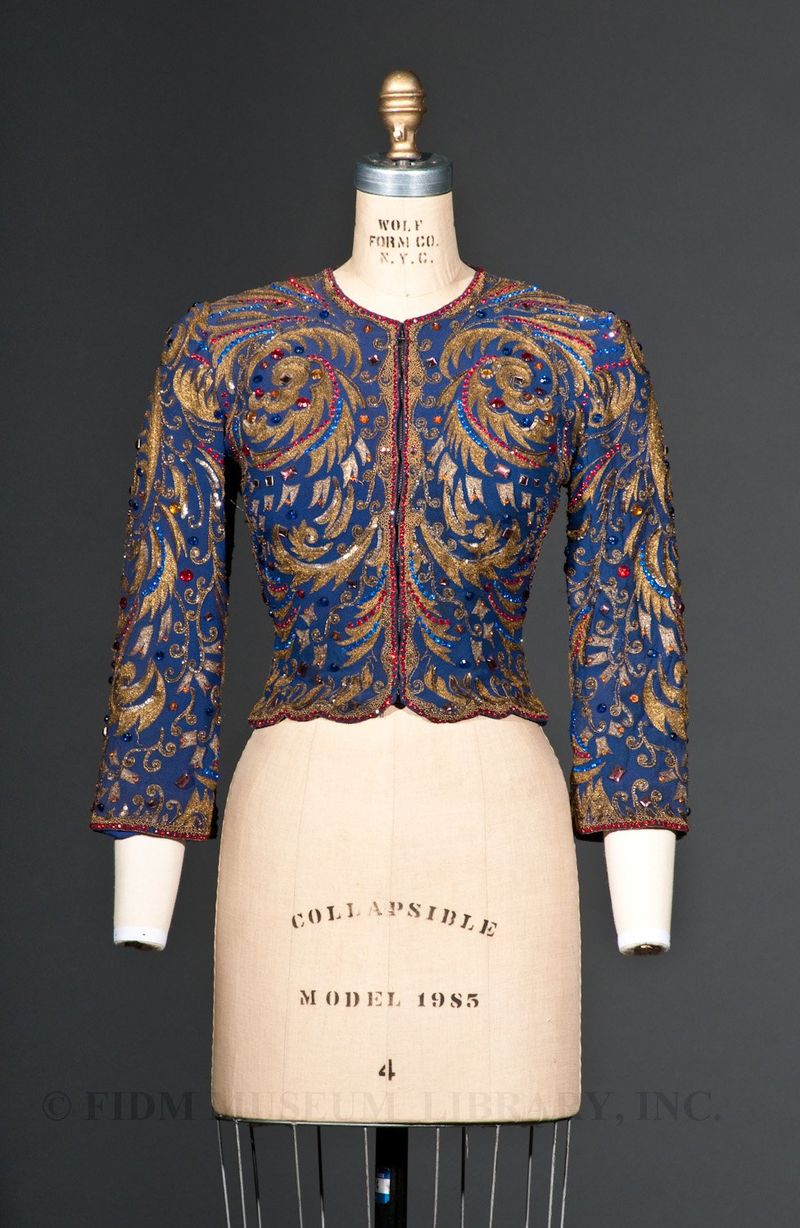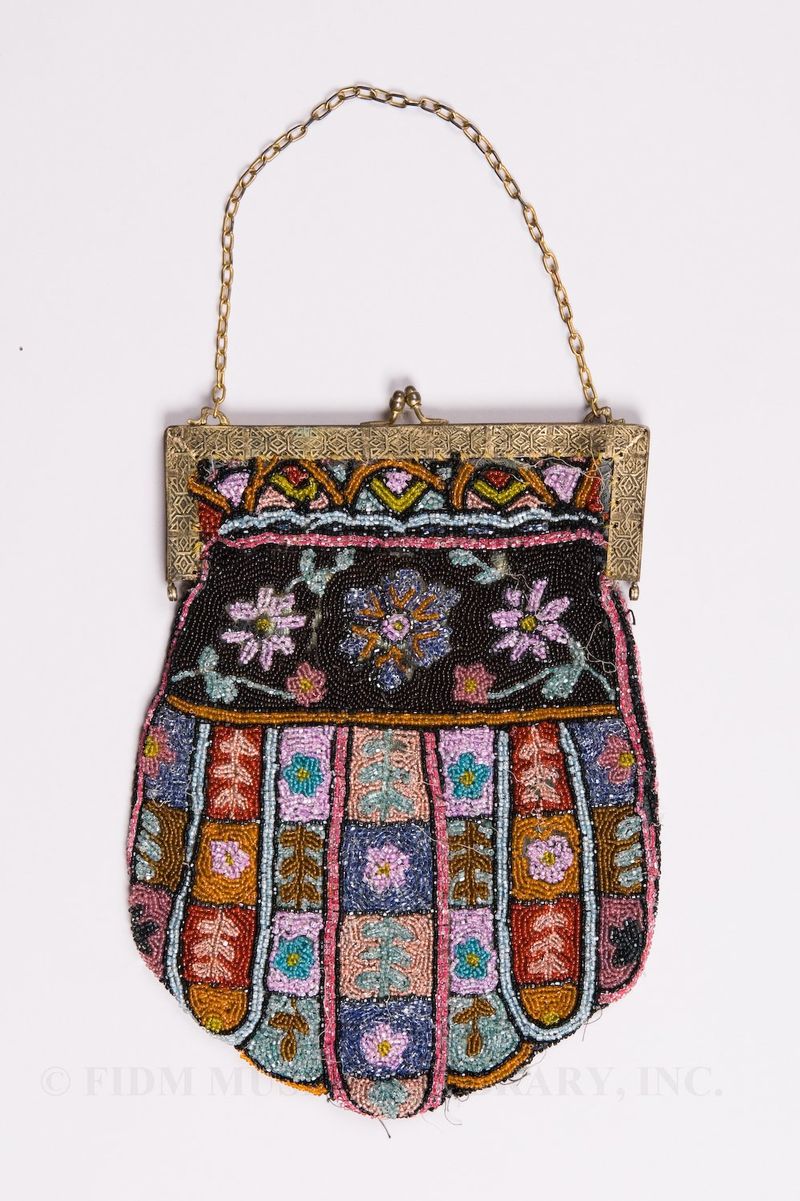This website uses cookies so that we can provide you with the best user experience possible. Cookie information is stored in your browser and performs functions such as recognising you when you return to our website and helping our team to understand which sections of the website you find most interesting and useful.
During the 1950s, French haute couture was a dominant force in fashion. Elite American women traveled to Paris and purchased their wardrobes directly from renowned couturiers, while many others experienced haute couture through mass-produced versions of the... Read Article ››
Nail head dresses
Young cosmopolitans love nail-head glitter!1 Dresses embellished with decorative gold, brass or silver nail heads first appeared in the late 1930s. Usually seen on solid-color "background" dresses of wool or synthetic crepe, nail heads were used as... Read Article ››
Sailor suits
Beginning in the mid-nineteenth century, young boys and girls were often dressed in sailor suits. Worn as both school uniforms and everyday dress, the popularity of the style was sparked by this 1846 Winterhalter portrait of Albert Edward, Prince of Wales.... Read Article ››
The Little Black Dress
During the nineteenth century, black clothing was usually worn to signify a special status, i.e. mourning, religious piety, extreme poverty or a position of economic and social authority. Because many professional men adopted black suit coats after 1850,... Read Article ››
Young Bess French hood
Released in 1953, the film Young Bess is a fictionalized biography of Queen Elizabeth I. Focusing on her life before she was crowned queen, the film is set in the late 1540s and stars Jean Simmons as Young Bess. The lavish, historically inspired costumes were... Read Article ››
Oscar dressing
In the early years of the Academy Awards, celebrities didn't always dress themselves in the latest glamorous fashions. In 1935, Claudette Colbert wore a simple traveling suit to accept the Best Actress Award for It Happened One Night. Colbert didn't... Read Article ››
Balenciaga
Popular conceptions of 1950s dress usually fixate on the defined waist and full skirt of Christian Dior's New Look. Though this silhouette dominated fashion for much of the decade, in 1957 a new shape appeared. Called the sack or chemise, this new dress... Read Article ››
Howard Greer
Today's post on Howard Greer was written by costume historian Shelly Foote. From 1994-2004, Shelly worked with the Costume Collection at The National Museum of American History as the Assistant Chair in the Division of Social History. Retired since 2004,... Read Article ››
Handbag variety
Like shoes, handbags and purses straddle the line between functional and decorative objects. Though many women (and some men) consider them necessary containers for objects such as keys or money, the sheer diversity of available styles demonstrates that... Read Article ››
Marimekko
With its oversized imagery and brightly clashing colors, Marimekko textiles are unmistakable. The Finnish company began in 1951 as a textile design firm specializing in hand silk-screened cotton fabric. The patterns created by Marimekko designers were a... Read Article ››
Ski in fashion
Blouse (detail)1957-1960Mr. DinoGift of Steven Porterfield2007.897.20 Until the 1950s, ski wear consisted of baggy woolen pants and knitted sweaters, topped with a bulky wool overcoat. Though warm and functional, these clothes did nothing to flatter the... Read Article ››
Aprons
In practical terms, aprons are merely protective overgarments, worn to prevent food or dirt from staining the clothing underneath. Despite these functional origins, aprons have taken on the much larger role of signifying feminine domesticity. This is... Read Article ››

